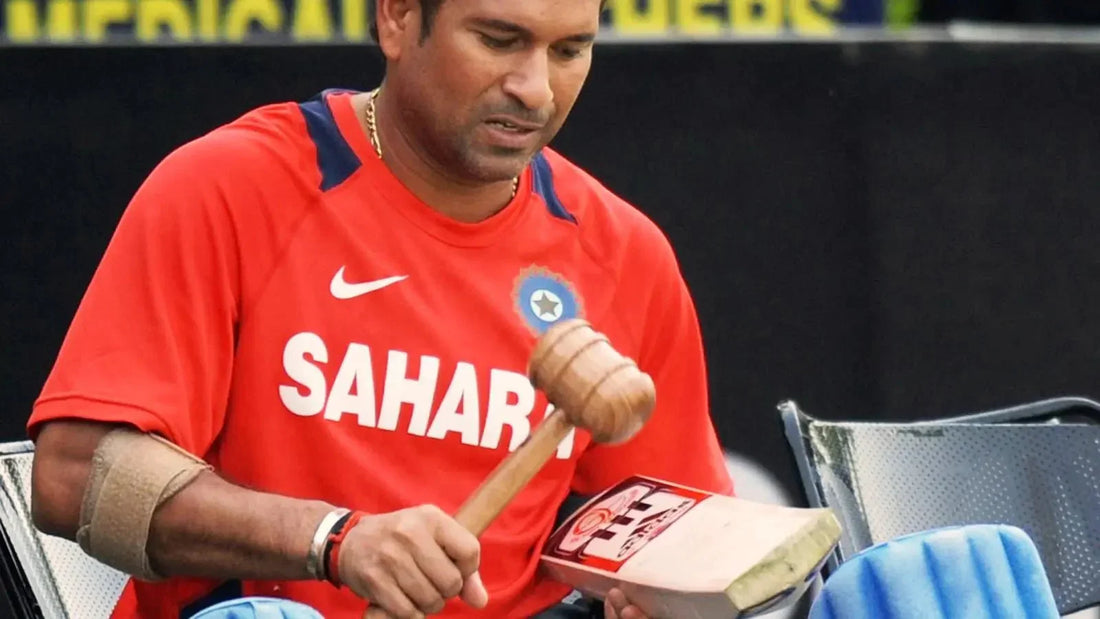
How to Knock-In a Cricket Bat in 2025 – The Complete Guide
Share
Ever bought a brand-new bat and cracked it in the first net session?
You're not alone. In India, where gully cricket legends are made and Ranji dreams begin, a bat is more than just wood – it's a warrior's weapon. But before your English or Kashmir willow earns its first run, it must be battle-ready. That's where knocking-in comes in.
Knocking-in prepares your cricket bat for real match impact. With new innovations in 2025, the process has evolved, but the basics still matter. Let’s dive in.
What Is Knocking-In and Why Is It Crucial in 2025?
Knocking-in is the process of compressing and conditioning the bat face and edges to withstand the impact of high-speed balls.
-
Strengthens the fibres: Makes the willow more compact, reducing cracking.
-
Protects the bat: Minimises damage from seam marks and toe strikes.
-
Enhances performance: Allows better ping and power transfer.
-
Prevents toe and edge damage: Especially important for subcontinental low-bounce pitches.
With today's aggressive formats like T20s and power-hitting, knocking-in is more crucial than ever.
Modern Techniques vs Old-School Methods: What’s Changed?
In 2025, bat preparation isn’t just about hitting a mallet for hours. Here’s how the scene has shifted:
-
3D mallets: These new tools mimic ball impact more accurately.
-
Machine knocking: Great for quick, even compression (ideal for bulk orders).
-
Hybrid oiling methods: Light oil, heat treatments, and pressure rolling are trending.
Yet, manual knocking-in remains the most trusted way for purists. It allows you to feel the bat, understand its grain, and condition it personally.
Pro tip: Check out our cricket bat mallets and knocking-in kits at IndianCricketStore.com for the latest gear.
Step-by-Step Guide: How to Knock In a Cricket Bat in 2025
Step 1: Oiling with Raw Linseed Oil
-
Use raw linseed oil for cricket bat (not boiled).
-
Apply a light coat to face, edges, and toe.
-
Leave bat flat for 24 hours.
-
Avoid the splice and handle.
Step 2: Mallet Knocking
-
Use a cricket bat mallet – start with the face, then the edges.
-
Knock in with firm but controlled taps.
-
Use circular motion on the face, angled taps on the edges.
-
Focus on toe and edges for durability.
Step 3: Soft Ball Practice
-
After 4-5 hours of mallet work, use an old leather or soft ball.
-
Play gentle throwdowns, avoid aggressive hits.
Step 4: Edge & Toe Reinforcement
-
Continue light knocking on the toe and edges.
-
Listen for the sound – a softer, deeper knock means it's ready.
Step 5: Protective Tape or Scuff Sheet
-
Apply a clear face tape or fibre scuff sheet.
-
This protects from surface cracks and prolongs life.
When Is Your Bat Ready for the Nets?
-
Perform the bounce test: Drop an old ball on the bat face – look for consistent rebound.
-
Check for seam marks: If they’re faint or absent, the bat is ready.
-
Start with soft throwdowns, not full-pelt fast bowling.
Tips from Bat Experts
-
Don’t over-oil – it can deaden the bat.
-
Avoid knocking the splice or handle area.
-
Use a proper bat mallet – not a hammer or dumbbell.
-
Oil lightly once a month if the bat looks dry.
Common Mistakes to Avoid When Knocking In a Bat
-
Hitting edges too hard early on.
-
Ignoring the toe – a common break point in Indian wickets.
-
Using a bat too early – even for underarm games.
-
Skipping the oiling step entirely.
Pro Tools for Knock-In – Available at IndianCricketStore.com
Speed up the process and get the best results with:
Save time with factory knocked-in bats – professionally prepared for 2025 formats.
FAQs
Is machine knocking better than hand knocking in 2025?
Machine knocking is faster and consistent but lacks the personal touch. Hand knocking allows better control and grain understanding.
How long should I knock in a new cricket bat?
8-10 hours minimum: 6 hours mallet work + 2-4 hours of soft net use.
What happens if I don’t knock in my cricket bat?
Chances of cracks, splits, or poor performance increase significantly. It voids most bat warranties too.
Can I use coconut oil instead of linseed oil for my bat?
No. Linseed oil penetrates better and preserves willow without damaging fibres. Coconut oil is not recommended.
How to fix a cricket bat with seam marks?
Lightly sand the area and reapply oil. Seam marks mean more knocking is needed.
Conclusion
Knocking-in your cricket bat is a rite of passage – one that pays off in performance, durability, and confidence. Whether you're playing under the lights or in the mohalla, a properly prepared bat makes all the difference.
Need help choosing the right gear? Reach out to our experts at IndianCricketStore.com
Happy batting!

